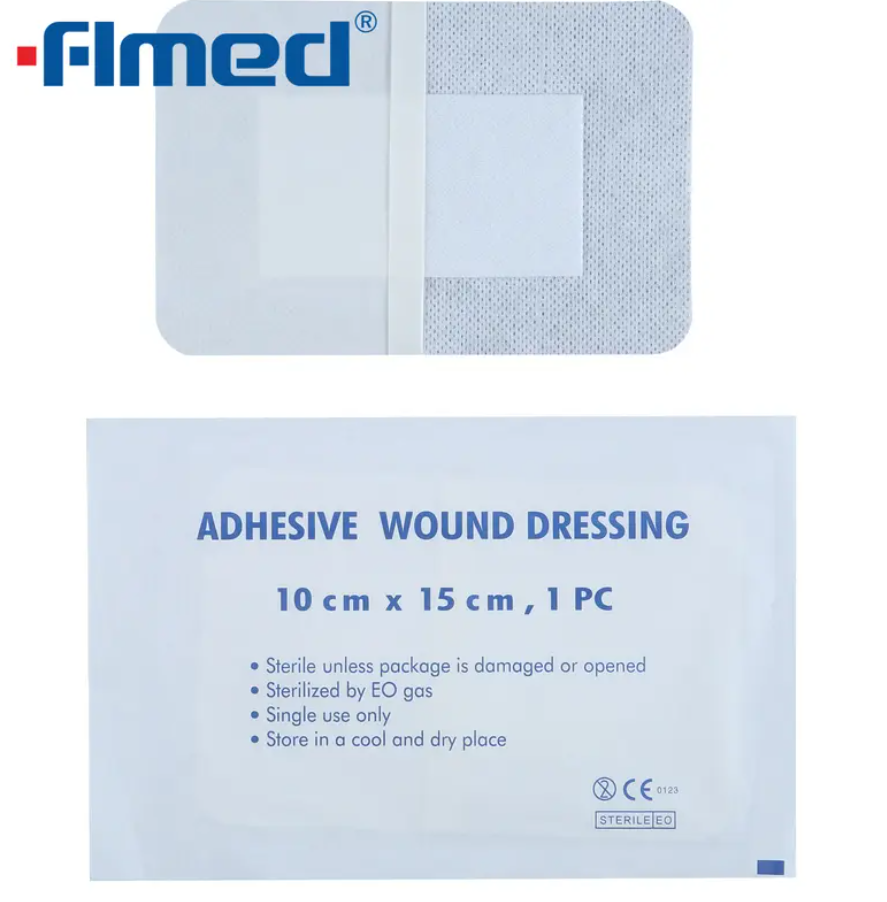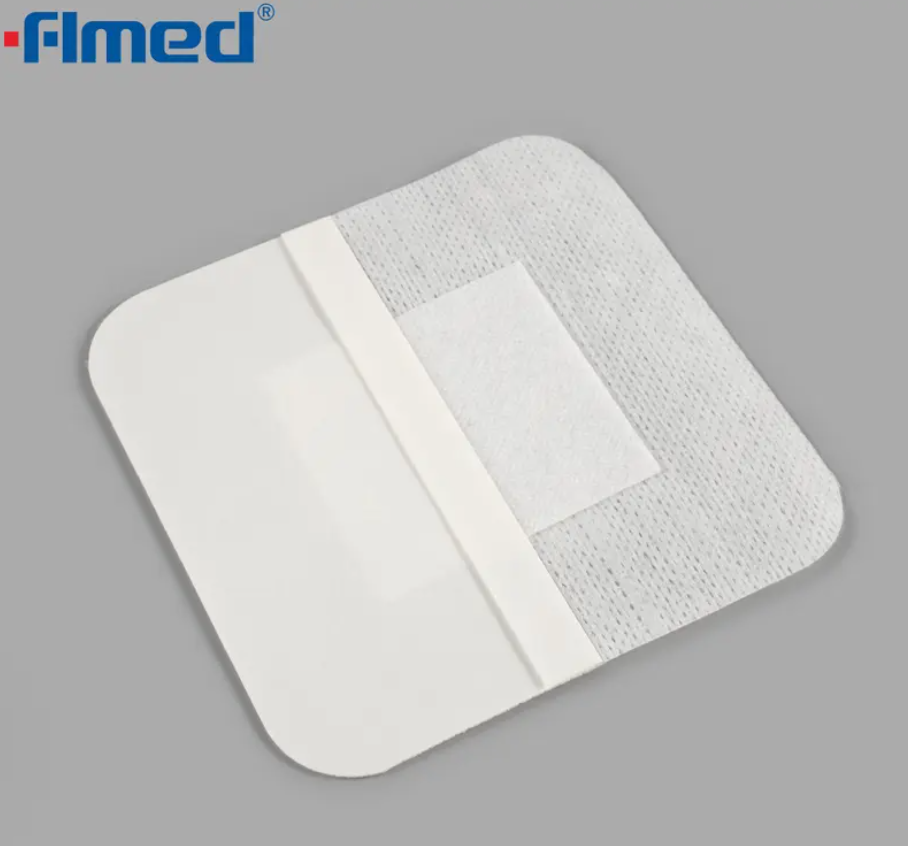
Wound care is a critical aspect of medical treatment, and the materials used for wound dressings play a pivotal role in the healing process. Among various dressing types, nonwoven wound dressings have gained significant attention due to their unique structure, superior functionality, and patient comfort.
Understanding Nonwoven Wound Dressings
Nonwoven wound dressings are made from fibers bonded together mechanically, chemically, or thermally, without weaving or knitting. This manufacturing method produces a fabric that is soft, porous, and highly absorbent, making it ideal for managing different types of wounds such as surgical incisions, burns, ulcers, and chronic wounds.
These dressings often combine multiple layers designed to protect the wound, absorb exudate, allow breathability, and prevent bacterial contamination. Common materials used in nonwoven dressings include viscose, polyester, polypropylene, and other biocompatible fibers.
![forlongmedical forlongmedical]()
How Nonwoven Dressings Accelerate Healing
1. Optimal Moisture Management
Maintaining the right moisture balance is one of the most crucial elements for effective wound healing. Nonwoven wound dressings excel in this aspect by absorbing excess wound exudate—fluids like blood, plasma, or pus—while simultaneously retaining enough moisture to keep the wound bed hydrated. This balance creates an ideal moist environment, which is essential for cellular activities such as migration and proliferation. These cellular processes drive tissue regeneration and promote faster wound closure.
Moist wounds encourage the activity of fibroblasts, which produce collagen and extracellular matrix needed to rebuild damaged tissues, and keratinocytes, which help reform the skin barrier. By preventing wounds from becoming too dry, which slows healing and causes scab formation, and avoiding maceration (where excess moisture causes skin softening and breakdown), nonwoven dressings provide an environment that optimizes natural healing processes. This moisture regulation helps reduce pain and inflammation, contributing to a more comfortable and quicker recovery for the patient.
2. Superior Absorbency and Fluid Control
Nonwoven materials are uniquely suited for wound management due to their fibrous, porous structure that provides high absorbency. These dressings can quickly take up large volumes of fluid, trapping blood, serous fluid, and infectious exudate away from the wound surface. This absorption reduces the risk of leakage onto surrounding skin or clothing, helping keep the wound area clean and hygienic.
Minimizing fluid leakage is important not only for patient comfort but also because it lowers the risk of contamination and secondary infections. Moreover, by efficiently controlling wound fluids, nonwoven dressings reduce the frequency of dressing changes. Frequent changes can disturb the delicate healing tissue, causing pain and potentially introducing pathogens. Hence, fewer dressing replacements mean less trauma and better protection for the healing wound.
3. Breathability and Air Permeability
Nonwoven wound dressings are engineered to be breathable, allowing air and oxygen to reach the wound site while permitting moisture vapor to escape. This gas exchange is critical since oxygen plays a vital role in cellular metabolism, energy production, and the body’s immune defense mechanisms. Adequate oxygenation supports the activity of white blood cells that fight infection and accelerates tissue repair.
At the same time, breathability prevents the buildup of excess moisture that can lead to maceration and skin irritation around the wound edges. By maintaining a balanced microclimate, nonwoven dressings protect both the wound and the surrounding skin from damage, promoting healthier healing conditions and reducing complications.
4. Reduced Risk of Infection
Infection control is paramount in wound management, and nonwoven wound dressings offer significant advantages in this area. Their structure serves as a physical barrier, blocking the entry of bacteria, dust, and other contaminants into the wound. Furthermore, many nonwoven dressings are treated with antimicrobial agents such as silver ions, iodine, or chlorhexidine, which actively inhibit microbial growth.
Some dressings incorporate specialized films or layers that combine breathability with impermeability to microorganisms, effectively balancing protection and comfort. By reducing microbial colonization, these dressings help prevent common wound infections like cellulitis or even more serious systemic infections, leading to safer and cleaner healing outcomes.
5. Comfortable and Gentle on Skin
The softness and flexibility of nonwoven fabrics make these dressings exceptionally comfortable for patients, an important consideration in wound care, especially for long-term or chronic wounds. Nonwoven dressings conform easily to the body’s contours, reducing pressure points and friction that might aggravate sensitive skin or cause additional injury.
Unlike some traditional gauze or adhesive dressings that can stick aggressively to the wound bed and cause pain or trauma when removed, nonwoven dressings are designed to minimize adhesion. They can often be moistened prior to removal, further reducing discomfort and preventing damage to new tissue. This gentleness is particularly beneficial for vulnerable populations such as the elderly, children, or patients with diabetes, who are prone to skin fragility.
Comfortable dressings also improve patient compliance with treatment protocols, as patients are more likely to keep the dressing in place and adhere to care instructions if discomfort is minimized. This consistency further enhances healing outcomes.
6. Versatility for Various Wound Types
Nonwoven wound dressings are highly versatile and can be tailored to suit an extensive range of wound types and severities. They come in different thicknesses, sizes, and absorption capacities, allowing healthcare professionals to select the appropriate product whether the wound is a minor abrasion, a surgical incision, a chronic ulcer, or a burn.
Their flexibility enables easy application to challenging anatomical locations such as joints (knees, elbows), fingertips, or facial areas, where movement and irregular surfaces might complicate dressing adherence. Some nonwoven dressings are also designed with additional features like adhesive borders or reinforced pads for added security and protection.
This adaptability makes nonwoven dressings a preferred choice in diverse care settings—ranging from high-tech hospitals and outpatient clinics to home care environments—where wound types and patient needs can vary widely.
Advantages Over Traditional Wound Dressings
Compared to cotton gauze and other woven materials, nonwoven wound dressings offer:
Improved fluid handling: Nonwoven fabrics absorb and lock fluids more efficiently.
Lower linting: Nonwoven dressings shed fewer fibers, reducing the risk of debris contamination.
Consistent quality: Industrial production ensures uniform performance.
Enhanced sterility: Many nonwoven dressings come pre-sterilized and individually packaged.
Better comfort and conformability: Softness and flexibility help reduce pressure points and skin irritation.
Environmental Considerations
While disposability is often seen as a drawback for medical supplies, many manufacturers now produce eco-friendly nonwoven dressings made from biodegradable or recyclable fibers. This development supports sustainable healthcare initiatives while maintaining high product performance.
Proper Use and Handling Tips
To maximize the benefits of nonwoven wound dressings:
Clean and prepare the wound according to clinical guidelines.
Choose the appropriate dressing size and absorbency based on wound exudate levels.
Change dressings as recommended, minimizing disturbance to the wound.
Monitor for signs of infection or delayed healing.
Dispose of used dressings safely to prevent contamination.
Conclusion
Nonwoven wound dressings represent a significant advancement in wound care technology, promoting faster, cleaner, and more comfortable healing. Their superior moisture management, absorbency, breathability, and infection control make them invaluable for both acute and chronic wounds. As healthcare providers and patients increasingly demand effective, easy-to-use solutions, nonwoven dressings stand out as a reliable choice.
For more information on high-quality nonwoven wound dressings and related medical disposables, visit www.forlongmedical.com. Whether you are a healthcare professional or a purchasing manager, this company offers a range of trusted products designed to meet modern wound care needs. Feel free to contact them for personalized advice and product recommendations.

 English
English










